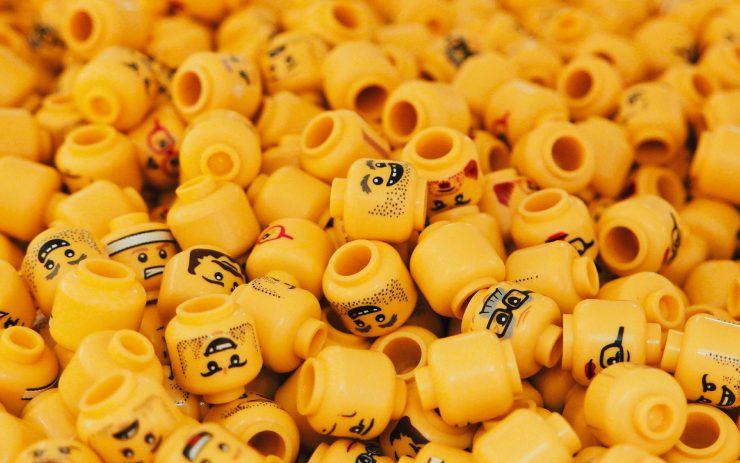As I eat a granola bar and toss the package in the garbage I can’t stop thinking of how easy it was for me to just dispose a wrap of material that is causing many of the environmental issues we hear of now a day. We live in a throw-away society and apparently, we are ok with that. Some more deeply than others.
For us, throwing away objects that seemed invaluable a few years ago is the common denominator, and that is not necessarily our fault; a month ago, the battery of my 2-year-old laptop stopped working to which now I must be plugged to the wall at all times. I know, it’s annoying. In an attempt to fix the problem, instead of just replacing the whole computer, I compared prices for a new battery, and guess what… It is cheaper to buy a new laptop than to change the battery. I guess I’ll just keep working connected to the wall.
The disposable culture that we live in can be divided into two groups; the first one is in which we deliberately choose to purchase disposable products, even when knowing what the consequences of using those products may be. The second group is the one that we are unable to control, mostly caused by manufacturing companies and pre-programmed life-spans in products.
Let’s start discussing the first group: contaminating by choice. We live in a society that looks toward making things easier for our daily lives. That means disposable razors, plates, cutlery, food packages, bags, among many other products that can be thrown away after one use. You might try to argue that most processed food comes in disposable packages, leaving no other option but to dispose the waste, nevertheless, we always have options; we could buy one big tube of yogurt and use a reusable container to take it with us, instead of individual cups, we just choose not to. But, why do we choose waste? Because not doing so is inconvenient.
A few months ago, when I first arrived to Montreal, I promised myself that I would try to be more waste conscious. I bought every shape of Tupperware that could be acquired in the supermarket and decided to take it to the next level; stop using plastic bags. I already owned a grocery bag therefore grocery bags made of plastic would be unnecessary, nevertheless, I wanted to be able to pack my fresh fruits and vegetables in fabric bags instead of the typical transparent bags that are offered in the fresh section of every supermarket. It hurts me to say this, but I couldn’t find a single store in which I could buy fabric bags for vegetables. Why was it so hard to be environmentally conscious? Maybe, if those options were more accessible, people would actually adopt them into their lifestyle. Or maybe, if we, as consumers, start demanding this options, they will be made available for us.
I am not suggesting a radical change in lifestyle, just minimal changes that might make a big impact; bring your own grocery bag to the super market and pack your food in reusable container. If someone is feeling adventurous, you might even change the way you eat: Fresh food equals less packaging. It is as simple as that.
There is one extra practice that we are accustomed to that might be the best way of describing what the disposable culture is. We acquire products, not because we need them, but because we want a newer model; people don’t stay for more than two years with the same cellphone, even when it works perfectly. It is a purchase inspired solely by greed and image, leading to tons of electrical waste from “old cellphones”. We throw away our old cellphone and buy a new one because “we can”.
Now, let’s go to the other side of the coin. The waste caused by manufacturing companies. This type of waste is not easily avoidable by consumers (that’s why we might as well have as little waste as possible with the things we can control, right?), but it could definitely be avoidable if it wasn’t for the capitalist vision and the focus on monetary gain.
This relatively new practice of inciting purchases was born in the 1930’s as a way to reactivate the American economy during the depression. In the meantime, manufacturers realized that people would not need to constantly buy the products that they produced if those products lasted forever. That’s when the planned obsolescence was created. Planned obsolescence is deliberately designing products that fail after a certain time period, obligating the customer to replace them. Does it sound familiar?
Given that this is the third laptop that dies out of a battery issue in 6 years, it seems to me as an obvious statement that they were meant to last two years each (or that I’m very unlucky). Appliances last less every time and advertising puts in a great deal of effort convincing consumers of what their next purchase should be, with complete certainty that there will be a next purchase.
Although we are hardwired to just dispose whichever product stops working, fixing it would not be an option anyway. The reason why planned obsolescence works is because products can’t be fixed in most cases; either there are no spare parts to replace the broken ones, or the system becomes too obsolete and can’t be upgraded anymore. We are stuck in a world in which polluting is seen as normal…unless we start demanding otherwise.
Recently, some consumers have made an effort to fight the industry by teaching other users how to fix some of the broken parts, or even reprogram a device to allow for new upgrades, nevertheless, that is very small scale. What if there was a way in which manufacturers could keep producing at the same rate, without lowering their profit, but in a more environmentally friendly manner? Well, they can. To see how, check out my next blog post in which I’ll be stating several ways in which manufacturers can lead the way into a cleaner planet.







[…] we discussed in my last blog post [Disposable culture – Part I], we live in a society that revolves around throwing away waste and replacing it with new products, […]
[…] still caught up in my previously written blog post regarding the disposable culture we live in, I just can’t get the huge amount of plastic waste we produce out of my head. I’m […]